2. Zayka TO, Evdokimov DV, Sidorova YV, Abramets II, Nalotov SV. 2015; Antidepressant-like effects of substances with cerebroprotective activity. Biol Markers Guided Ther. 2:79–88. DOI:
10.12988/bmgt.2015.5117.

4. Hornung OP, Heim CM. 2014; Gene-environment interactions and intermediate phenotypes: early trauma and depression. Front Endocrinol (Lausanne). 5:14. DOI:
10.3389/fendo.2014.00014. PMID:
24596569. PMCID:
PMC3925849.

5. Kessler RC, Berglund P, Demler O, Jin R, Koretz D, Merikangas KR, Rush AJ, Walters EE, Wang PS. 2003; The epidemiology of major depressive disorder: results from the National Comorbidity Survey Replication (NCS-R). JAMA. 289:3095–105. DOI:
10.1001/jama.289.23.3095. PMID:
12813115.
6. Kharamin S, Razmeh S, Nabovvati M, Moradian K, Rahimi S, Orooji M, Taghavian L, Mand Maher MK. 2019; Evaluation of antidepressant-like effect Lavandulifolia stachys in the forced swimming test in comparison with imipramine and fluoxetine. Int J Plant Biol. 10:7458. DOI:
10.4081/pb.2019.7458.

7. Panwar R, Sivakumar M, Menon V, Vairappan B. 2020; Changes in the levels of comet parameters before and after fluoxetine therapy in major depression patients. Anat Cell Biol. 53:194–200. DOI:
10.5115/acb.19.217. PMID:
32647087. PMCID:
PMC7343562.

8. Bagdy G, Graf M, Anheuer ZE, Modos EA, Kantor S. 2001; Anxiety-like effects induced by acute fluoxetine, sertraline or m-CPP treatment are reversed by pretreatment with the 5-HT2C receptor antagonist SB-242084 but not the 5-HT1A receptor antagonist WAY-100635. Int J Neuropsychopharmacol. 4:399–408. DOI:
10.1017/S1461145701002632. PMID:
11806866.

10. Birkett MA, Shinday NM, Kessler EJ, Meyer JS, Ritchie S, Rowlett JK. 2011; Acute anxiogenic-like effects of selective serotonin reuptake inhibitors are attenuated by the benzodiazepine diazepam in BALB/c mice. Pharmacol Biochem Behav. 98:544–51. DOI:
10.1016/j.pbb.2011.03.006. PMID:
21397628. PMCID:
PMC3085089.

11. Ramaekers JG. 2003; Antidepressants and driver impairment: empirical evidence from a standard on-the-road test. J Clin Psychiatry. 64:20–9. DOI:
10.4088/JCP.v64n0106. PMID:
12590619.
12. Sandager M, Nielsen ND, Stafford GI, van Staden J, Jäger AK. 2005; Alkaloids from Boophane disticha with affinity to the serotonin transporter in rat brain. J Ethnopharmacol. 98:367–70. DOI:
10.1016/j.jep.2005.01.037. PMID:
15814274.

13. Gadaga LL, Tagwireyi D, Dzangare J, Nhachi CF. 2011; Acute oral toxicity and neurobehavioural toxicological effects of hydroethanolic extract of Boophone disticha in rats. Hum Exp Toxicol. 30:972–80. DOI:
10.1177/0960327110384524. PMID:
20889580.

14. Pote W, Tagwireyi D, Chinyanga HM, Musara C, Pfukenyi DM, Nkomozepi P, Gadaga LL, Nyandoro G, Chifamba J. 2014; Long-term cardiovascular autonomic responses to aqueous ethanolic extract of Boophone disticha bulb in early maternally separated BALB/c mice. S Afr J Bot. 94:33–9. DOI:
10.1016/j.sajb.2014.04.012.

15. Pote W, Musarira S, Chuma D, Gadaga LL, Mwandiringana E, Tagwireyi D. 2018; Effects of a hydroethanolic extract of Boophone disticha bulb on anxiety-related behaviour in naive BALB/c mice. J Ethnopharmacol. 214:218–24. DOI:
10.1016/j.jep.2017.12.001. PMID:
29223391.

16. Pedersen ME, Szewczyk B, Stachowicz K, Wieronska J, Andersen J, Stafford GI, van Staden J, Pilc A, Jäger AK. 2008; Effects of South African traditional medicine in animal models for depression. J Ethnopharmacol. 119:542–8. DOI:
10.1016/j.jep.2008.08.030. PMID:
18809486.

17. Cheesman L, Nair JJ, van Staden J. 2012; Antibacterial activity of crinane alkaloids from Boophone disticha (Amaryllidaceae). J Ethnopharmacol. 140:405–8. DOI:
10.1016/j.jep.2012.01.037. PMID:
22322252.

18. Nkomozepi P, Mazengenya P, Ihunwo AO. 2019; Age-related changes in Ki-67 and DCX expression in the BALB/c mouse (Mus Musculus) brain. Int J Dev Neurosci. 72:36–47. DOI:
10.1016/j.ijdevneu.2018.11.005. PMID:
30472241.

19. Song NN, Huang Y, Yu X, Lang B, Ding YQ, Zhang L. 2017; Divergent roles of central serotonin in adult hippocampal neurogenesis. Front Cell Neurosci. 11:185. DOI:
10.3389/fncel.2017.00185. PMID:
28713247. PMCID:
PMC5492328.

21. Mul JD, Zheng J, Goodyear LJ. 2016; Validity assessment of 5 day repeated forced-swim stress to model human depression in young-adult C57BL/6J and BALB/cJ mice. eNeuro. 3:ENEURO.0201-16.2016. DOI:
10.1523/ENEURO.0201-16.2016. PMID:
28058270. PMCID:
PMC5197406.

22. Serchov T, Clement HW, Schwarz MK, Iasevoli F, Tosh DK, Idzko M, Jacobson KA, de Bartolomeis A, Normann C, Biber K, van Calker D. 2015; Increased signaling via adenosine A1 receptors, sleep deprivation, imipramine, and ketamine inhibit depressive-like behavior via induction of homer1a. Neuron. 87:549–62. DOI:
10.1016/j.neuron.2015.07.010. PMID:
26247862. PMCID:
PMC4803038.

23. Hodes GE, Hill-Smith TE, Lucki I. 2010; Fluoxetine treatment induces dose dependent alterations in depression associated behavior and neural plasticity in female mice. Neurosci Lett. 484:12–6. DOI:
10.1016/j.neulet.2010.07.084. PMID:
20692322. PMCID:
PMC4623584.

24. Pawluski JL, van Donkelaar E, Abrams Z, Houbart V, Fillet M, Steinbusch HW, Charlier TD. 2014; Fluoxetine dose and administration method differentially affect hippocampal plasticity in adult female rats. Neural Plast. 2014:123026. DOI:
10.1155/2014/123026. PMID:
24757568. PMCID:
PMC3976918.

25. Porsolt RD, Bertin A, Jalfre M. 1977; Behavioral despair in mice: a primary screening test for antidepressants. Arch Int Pharmacodyn Ther. 229:327–36. PMID:
596982.
26. Kara NZ, Stukalin Y, Einat H. 2018; Revisiting the validity of the mouse forced swim test: systematic review and meta-analysis of the effects of prototypic antidepressants. Neurosci Biobehav Rev. 84:1–11. DOI:
10.1016/j.neubiorev.2017.11.003. PMID:
29128579.

29. Sewell F, Waterson I, Jones D, Tricklebank MD, Ragan I. 2021; Preclinical screening for antidepressant activity - shifting focus away from the Forced Swim Test to the use of translational biomarkers. Regul Toxicol Pharmacol. 125:105002. DOI:
10.1016/j.yrtph.2021.105002. PMID:
34245825.

31. Walf AA, Frye CA. 2007; The use of the elevated plus maze as an assay of anxiety-related behavior in rodents. Nat Protoc. 2:322–8. DOI:
10.1038/nprot.2007.44. PMID:
17406592. PMCID:
PMC3623971.

34. Neergaard JS, Andersen J, Pedersen ME, Stafford GI, Staden JV, Jäger AK. 2009; Alkaloids from Boophone disticha with affinity to the serotonin transporter. S Afr J Bot. 75:371–4. DOI:
10.1016/j.sajb.2009.02.173.

35. Dulawa SC, Holick KA, Gundersen B, Hen R. 2004; Effects of chronic fluoxetine in animal models of anxiety and depression. Neuropsychopharmacology. 29:1321–30. DOI:
10.1038/sj.npp.1300433. PMID:
15085085.

36. Mezadri TJ, Batista GM, Portes AC, Marino-Neto J, Lino-de-Oliveira C. 2011; Repeated rat-forced swim test: reducing the number of animals to evaluate gradual effects of antidepressants. J Neurosci Methods. 195:200–5. DOI:
10.1016/j.jneumeth.2010.12.015. PMID:
21167866.

37. Detke MJ, Rickels M, Lucki I. 1995; Active behaviors in the rat forced swimming test differentially produced by serotonergic and noradrenergic antidepressants. Psychopharmacology (Berl). 121:66–72. DOI:
10.1007/BF02245592. PMID:
8539342.

38. Page ME, Detke MJ, Dalvi A, Kirby LG, Lucki I. 1999; Serotonergic mediation of the effects of fluoxetine, but not desipramine, in the rat forced swimming test. Psychopharmacology (Berl). 147:162–7. DOI:
10.1007/s002130051156. PMID:
10591883.

39. Handley SL, McBlane JW. 1993; An assessment of the elevated X-maze for studying anxiety and anxiety-modulating drugs. J Pharmacol Toxicol Methods. 29:129–38. DOI:
10.1016/1056-8719(93)90063-K. PMID:
8103377.

40. Rocher C, Spedding M, Munoz C, Jay TM. 2004; Acute stress-induced changes in hippocampal/prefrontal circuits in rats: effects of antidepressants. Cereb Cortex. 14:224–9. Erratum in: Cereb Cortex 2004;14:352. DOI:
10.1093/cercor/bhg122. PMID:
14704220.

41. Lee T, Jarome T, Li SJ, Kim JJ, Helmstetter FJ. 2009; Chronic stress selectively reduces hippocampal volume in rats: a longitudinal magnetic resonance imaging study. Neuroreport. 20:1554–8. DOI:
10.1097/WNR.0b013e328332bb09. PMID:
19858767. PMCID:
PMC2783199.

42. Malhi GS, Das P, Outhred T, Dobson-Stone C, Irwin L, Gessler D, Bryant R, Mannie Z. 2019; Effect of stress gene-by-environment interactions on hippocampal volumes and cortisol secretion in adolescent girls. Aust N Z J Psychiatry. 53:316–25. DOI:
10.1177/0004867419827649. PMID:
30754992.

43. Moica T, Gligor A, Moica S. 2016; The relationship between cortisol and the hippocampal volume in depressed patients - a MRI pilot study. Proced Technol. 22:1106–12. DOI:
10.1016/j.protcy.2016.01.156.

44. Rahman MM, Callaghan CK, Kerskens CM, Chattarji S, O'Mara SM. 2016; Early hippocampal volume loss as a marker of eventual memory deficits caused by repeated stress. Sci Rep. 6:29127. DOI:
10.1038/srep29127. PMID:
27374165. PMCID:
PMC4931588.

45. Zimmerman ME, Ezzati A, Katz MJ, Lipton ML, Brickman AM, Sliwinski MJ, Lipton RB. 2016; Perceived stress is differentially related to hippocampal subfield volumes among older adults. PLoS One. 11:e0154530. DOI:
10.1371/journal.pone.0154530. PMID:
27144832. PMCID:
PMC4856349.

46. Pham K, Nacher J, Hof PR, McEwen BS. 2003; Repeated restraint stress suppresses neurogenesis and induces biphasic PSA-NCAM expression in the adult rat dentate gyrus. Eur J Neurosci. 17:879–86. DOI:
10.1046/j.1460-9568.2003.02513.x. PMID:
12603278.

48. Marečková K, Mareček R, Bencurova P, Klánová J, Dušek L, Brázdil M. 2018; Perinatal stress and human hippocampal volume: findings from typically developing young adults. Sci Rep. 8:4696. DOI:
10.1038/s41598-018-23046-6. PMID:
29549289. PMCID:
PMC5856850.

49. Maguire EA, Woollett K, Spiers HJ. 2006; London taxi drivers and bus drivers: a structural MRI and neuropsychological analysis. Hippocampus. 16:1091–101. DOI:
10.1002/hipo.20233. PMID:
17024677.

51. Kobayashi K, Ikeda Y, Sakai A, Yamasaki N, Haneda E, Miyakawa T, Suzuki H. 2010; Reversal of hippocampal neuronal maturation by serotonergic antidepressants. Proc Natl Acad Sci U S A. 107:8434–9. DOI:
10.1073/pnas.0912690107. PMID:
20404165. PMCID:
PMC2889553.

52. Ohira K, Miyakawa T. 2011; Chronic treatment with fluoxetine for more than 6 weeks decreases neurogenesis in the subventricular zone of adult mice. Mol Brain. 4:10. DOI:
10.1186/1756-6606-4-10. PMID:
21385396. PMCID:
PMC3060120.

54. Shuto T, Kuroiwa M, Sotogaku N, Kawahara Y, Oh YS, Jang JH, Shin CH, Ohnishi YN, Hanada Y, Miyakawa T, Kim Y, Greengard P, Nishi A. 2020; Obligatory roles of dopamine D1 receptors in the dentate gyrus in antidepressant actions of a selective serotonin reuptake inhibitor, fluoxetine. Mol Psychiatry. 25:1229–44. DOI:
10.1038/s41380-018-0316-x. PMID:
30531938. PMCID:
PMC7244404.

55. Encinas JM, Vaahtokari A, Enikolopov G. 2006; Fluoxetine targets early progenitor cells in the adult brain. Proc Natl Acad Sci U S A. 103:8233–8. DOI:
10.1073/pnas.0601992103. PMID:
16702546. PMCID:
PMC1461404.

56. Wang JW, David DJ, Monckton JE, Battaglia F, Hen R. 2008; Chronic fluoxetine stimulates maturation and synaptic plasticity of adult-born hippocampal granule cells. J Neurosci. 28:1374–84. DOI:
10.1523/JNEUROSCI.3632-07.2008. PMID:
18256257. PMCID:
PMC6671574.

57. Boldrini M, Santiago AN, Hen R, Dwork AJ, Rosoklija GB, Tamir H, Arango V, John Mann J. 2013; Hippocampal granule neuron number and dentate gyrus volume in antidepressant-treated and untreated major depression. Neuropsychopharmacology. 38:1068–77. DOI:
10.1038/npp.2013.5. PMID:
23303074. PMCID:
PMC3629406.

58. Samuels BA, Anacker C, Hu A, Levinstein MR, Pickenhagen A, Tsetsenis T, Madroñal N, Donaldson ZR, Drew LJ, Dranovsky A, Gross CT, Tanaka KF, Hen R. 2015; 5-HT1A receptors on mature dentate gyrus granule cells are critical for the antidepressant response. Nat Neurosci. 18:1606–16. DOI:
10.1038/nn.4116. PMID:
26389840. PMCID:
PMC4624493.

59. Turcotte-Cardin V, Vahid-Ansari F, Luckhart C, Daigle M, Geddes SD, Tanaka KF, Hen R, James J, Merali Z, Béïque JC, Albert PR. 2019; Loss of adult 5-HT1A autoreceptors results in a paradoxical anxiogenic response to antidepressant treatment. J Neurosci. 39:1334–46. DOI:
10.1523/JNEUROSCI.0352-18.2018. PMID:
30552180. PMCID:
PMC6381250.

60. Klempin F, Babu H, De Pietri Tonelli D, Alarcon E, Fabel K, Kempermann G. 2010; Oppositional effects of serotonin receptors 5-HT1a, 2, and 2c in the regulation of adult hippocampal neurogenesis. Front Mol Neurosci. 3:14. DOI:
10.3389/fnmol.2010.00014. PMID:
20721314. PMCID:
PMC2922940.

61. Arnold SA, Hagg T. 2012; Serotonin 1A receptor agonist increases species- and region-selective adult CNS proliferation, but not through CNTF. Neuropharmacology. 63:1238–47. DOI:
10.1016/j.neuropharm.2012.07.047. PMID:
22884499. PMCID:
PMC3438376.

62. Mendez-David I, David DJ, Darcet F, Wu MV, Kerdine-Römer S, Gardier AM, Hen R. 2014; Rapid anxiolytic effects of a 5-HT₄ receptor agonist are mediated by a neurogenesis-independent mechanism. Neuropsychopharmacology. 39:1366–78. DOI:
10.1038/npp.2013.332. PMID:
24287720. PMCID:
PMC3988540.
63. Browne CA, Hanke J, Rose C, Walsh I, Foley T, Clarke G, Schwegler H, Cryan JF, Yilmazer-Hanke D. 2014; Effect of acute swim stress on plasma corticosterone and brain monoamine levels in bidirectionally selected DxH recombinant inbred mouse strains differing in fear recall and extinction. Stress. 17:471–83. DOI:
10.3109/10253890.2014.954104. PMID:
25117886. PMCID:
PMC4527314.

64. Habr SF, Macrini DJ, Florio JC, Bernardi MM. 2014; Repeated forced swim stress has additive effects in anxiety behavior and in cathecolamine levels of adult rats exposed to deltamethrin. Neurotoxicol Teratol. 46:57–61. DOI:
10.1016/j.ntt.2014.10.001. PMID:
25444720.

66. Wasinski F, Estrela GR, Arakaki AM, Bader M, Alenina N, Klempin F, Araújo RC. 2016; Maternal forced swimming reduces cell proliferation in the postnatal dentate gyrus of mouse offspring. Front Neurosci. 10:402. DOI:
10.3389/fnins.2016.00402. PMID:
27621701. PMCID:
PMC5002407.

67. Emiliano S, Ana Cecilia L, Karen B, Guillermo H, Nancy R. 2019; Effect of prenatal stress and forced swimming acute stress on adult rat's skeletal muscle and liver MDA levels. MOJ Anat Physiol. 6:266–31. DOI:
10.15406/mojap.2019.06.00277.
69. Aihara M, Ida I, Yuuki N, Oshima A, Kumano H, Takahashi K, Fukuda M, Oriuchi N, Endo K, Matsuda H, Mikuni M. 2007; HPA axis dysfunction in unmedicated major depressive disorder and its normalization by pharmacotherapy correlates with alteration of neural activity in prefrontal cortex and limbic/paralimbic regions. Psychiatry Res. 155:245–56. DOI:
10.1016/j.pscychresns.2006.11.002. PMID:
17587554.

70. Knorr U, Vinberg M, Gether U, Winkel P, Gluud C, Wetterslev J, Kessing LV. 2012; The effect of escitalopram versus placebo on perceived stress and salivary cortisol in healthy first-degree relatives of patients with depression-a randomised trial. Psychiatry Res. 200:354–60. DOI:
10.1016/j.psychres.2012.05.015. PMID:
22703642.

71. Hernandez ME, Mendieta D, Pérez-Tapia M, Bojalil R, Estrada-Garcia I, Estrada-Parra S, Pavón L. 2013; Effect of selective serotonin reuptake inhibitors and immunomodulator on cytokines levels: an alternative therapy for patients with major depressive disorder. Clin Dev Immunol. 2013:267871. DOI:
10.1155/2013/267871. PMID:
24348675. PMCID:
PMC3855951.

72. Ruhé HG, Khoenkhoen SJ, Ottenhof KW, Koeter MW, Mocking RJ, Schene AH. 2015; Longitudinal effects of the SSRI paroxetine on salivary cortisol in Major Depressive Disorder. Psychoneuroendocrinology. 52:261–71. DOI:
10.1016/j.psyneuen.2014.10.024. PMID:
25544738.

73. Inder WJ, Prickett TC, Mulder RT, Donald RA, Joyce PR. 2001; Reduction in basal afternoon plasma ACTH during early treatment of depression with fluoxetine. Psychopharmacology (Berl). 156:73–8. DOI:
10.1007/s002130100737. PMID:
11465636.

74. Paile-Hyvärinen M, Wahlbeck K, Eriksson JG. 2003; Quality of life and metabolic status in mildly depressed women with type 2 diabetes treated with paroxetine: a single-blind randomised placebo controlled trial. BMC Fam Pract. 4:7. DOI:
10.1186/1471-2296-4-7. PMID:
12747810. PMCID:
PMC165418.

75. Hinkelmann K, Moritz S, Botzenhardt J, Muhtz C, Wiedemann K, Kellner M, Otte C. 2012; Changes in cortisol secretion during antidepressive treatment and cognitive improvement in patients with major depression: a longitudinal study. Psychoneuroendocrinology. 37:685–92. DOI:
10.1016/j.psyneuen.2011.08.012. PMID:
21944955.

76. Aydemir O, Deveci A, Taneli F. 2005; The effect of chronic antidepressant treatment on serum brain-derived neurotrophic factor levels in depressed patients: a preliminary study. Prog Neuropsychopharmacol Biol Psychiatry. 29:261–5. DOI:
10.1016/j.pnpbp.2004.11.009. PMID:
15694233.

77. Castrén E, Rantamäki T. 2010; The role of BDNF and its receptors in depression and antidepressant drug action: reactivation of developmental plasticity. Dev Neurobiol. 70:289–97. DOI:
10.1002/dneu.20758. PMID:
20186711.

78. Nagahara AH, Tuszynski MH. 2011; Potential therapeutic uses of BDNF in neurological and psychiatric disorders. Nat Rev Drug Discov. 10:209–19. DOI:
10.1038/nrd3366. PMID:
21358740.

79. Guilloux JP, Douillard-Guilloux G, Kota R, Wang X, Gardier AM, Martinowich K, Tseng GC, Lewis DA, Sibille E. 2012; Molecular evidence for BDNF- and GABA-related dysfunctions in the amygdala of female subjects with major depression. Mol Psychiatry. 17:1130–42. DOI:
10.1038/mp.2011.113. PMID:
21912391. PMCID:
PMC3237836.

80. Tripp A, Oh H, Guilloux JP, Martinowich K, Lewis DA, Sibille E. 2012; Brain-derived neurotrophic factor signaling and subgenual anterior cingulate cortex dysfunction in major depressive disorder. Am J Psychiatry. 169:1194–202. DOI:
10.1176/appi.ajp.2012.12020248. PMID:
23128924. PMCID:
PMC3638149.

82. Phillips C. 2017; Brain-derived neurotrophic factor, depression, and physical activity: making the neuroplastic connection. Neural Plast. 2017:7260130. DOI:
10.1155/2017/7260130. PMID:
28928987. PMCID:
PMC5591905.

83. Monteggia LM, Luikart B, Barrot M, Theobold D, Malkovska I, Nef S, Parada LF, Nestler EJ. 2007; Brain-derived neurotrophic factor conditional knockouts show gender differences in depression-related behaviors. Biol Psychiatry. 61:187–97. DOI:
10.1016/j.biopsych.2006.03.021. PMID:
16697351.

84. Lindholm JS, Castrén E. 2014; Mice with altered BDNF signaling as models for mood disorders and antidepressant effects. Front Behav Neurosci. 8:143. DOI:
10.3389/fnbeh.2014.00143. PMID:
24817844. PMCID:
PMC4012208.

85. Nibuya M, Morinobu S, Duman RS. 1995; Regulation of BDNF and trkB mRNA in rat brain by chronic electroconvulsive seizure and antidepressant drug treatments. J Neurosci. 15:7539–47. DOI:
10.1523/JNEUROSCI.15-11-07539.1995. PMID:
7472505. PMCID:
PMC6578063.

86. Nibuya M, Nestler EJ, Duman RS. 1996; Chronic antidepressant administration increases the expression of cAMP response element binding protein (CREB) in rat hippocampus. J Neurosci. 16:2365–72. DOI:
10.1523/JNEUROSCI.16-07-02365.1996. PMID:
8601816. PMCID:
PMC6578518.

87. Maya Vetencourt JF, Sale A, Viegi A, Baroncelli L, De Pasquale R, O'Leary OF, Castrén E, Maffei L. 2008; The antidepressant fluoxetine restores plasticity in the adult visual cortex. Science. 320:385–8. DOI:
10.1126/science.1150516. PMID:
18420937.

89. Castrén E, Kojima M. 2017; Brain-derived neurotrophic factor in mood disorders and antidepressant treatments. Neurobiol Dis. 97(Pt B):119–26. DOI:
10.1016/j.nbd.2016.07.010. PMID:
27425886.

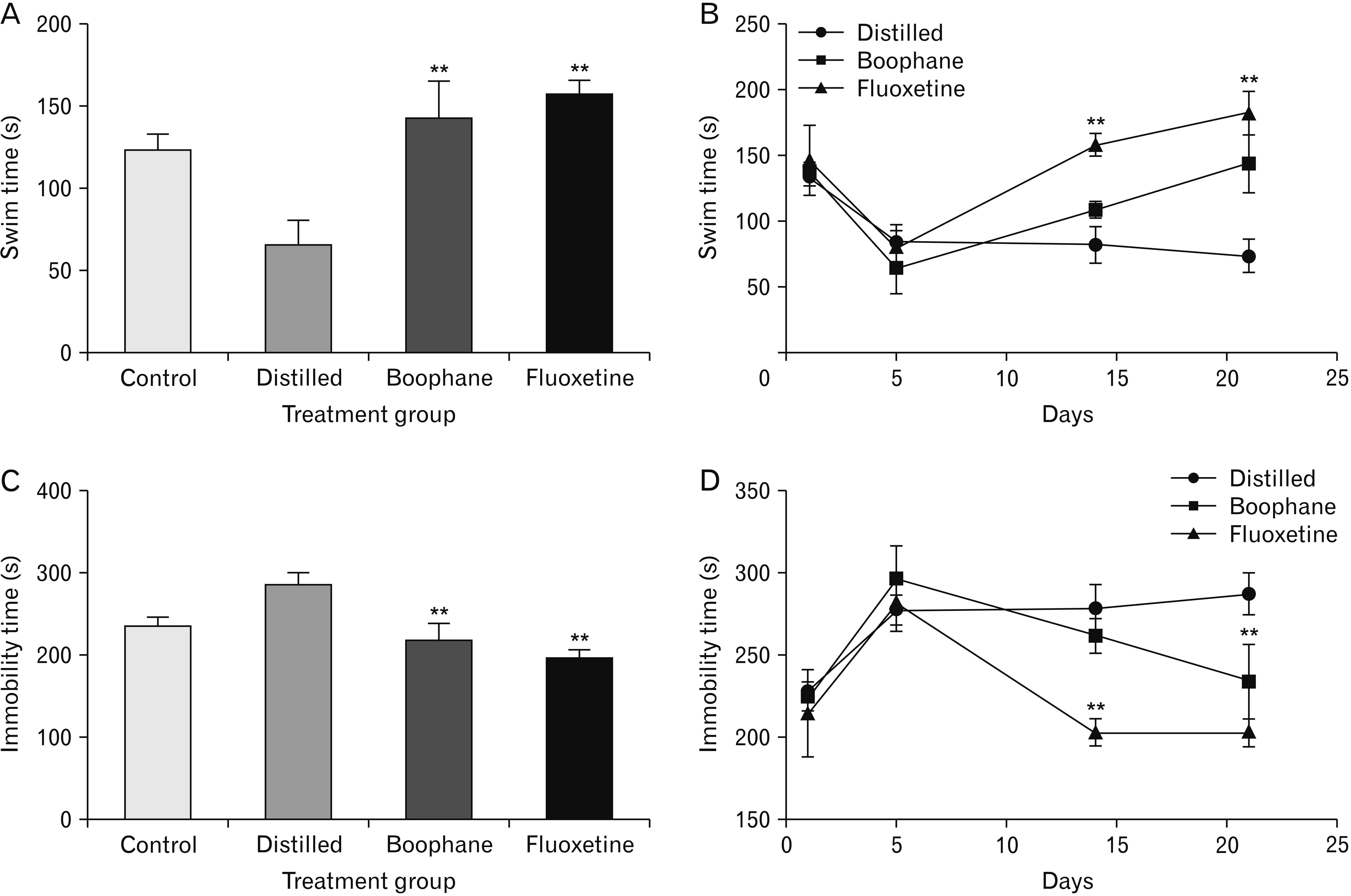
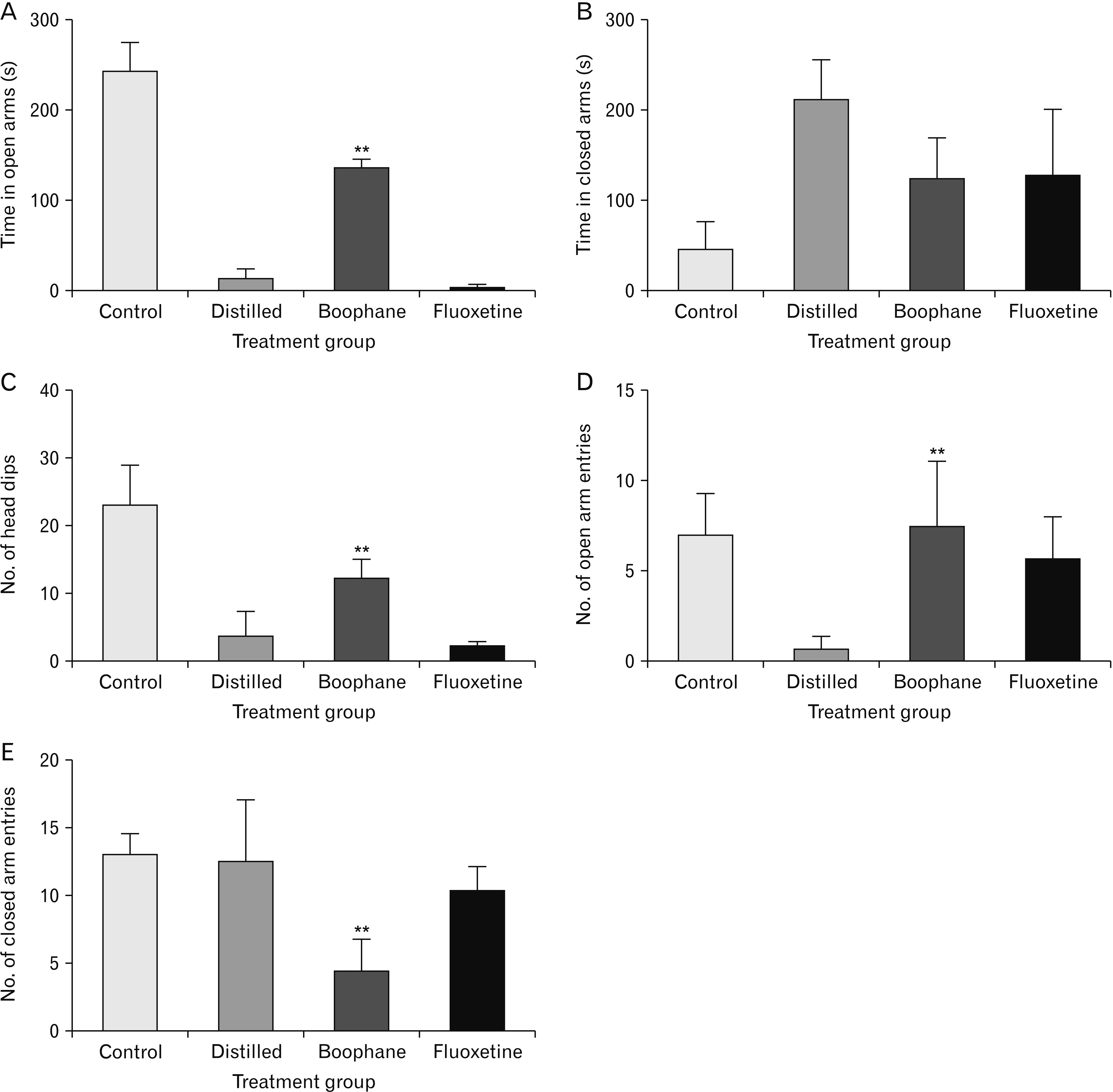
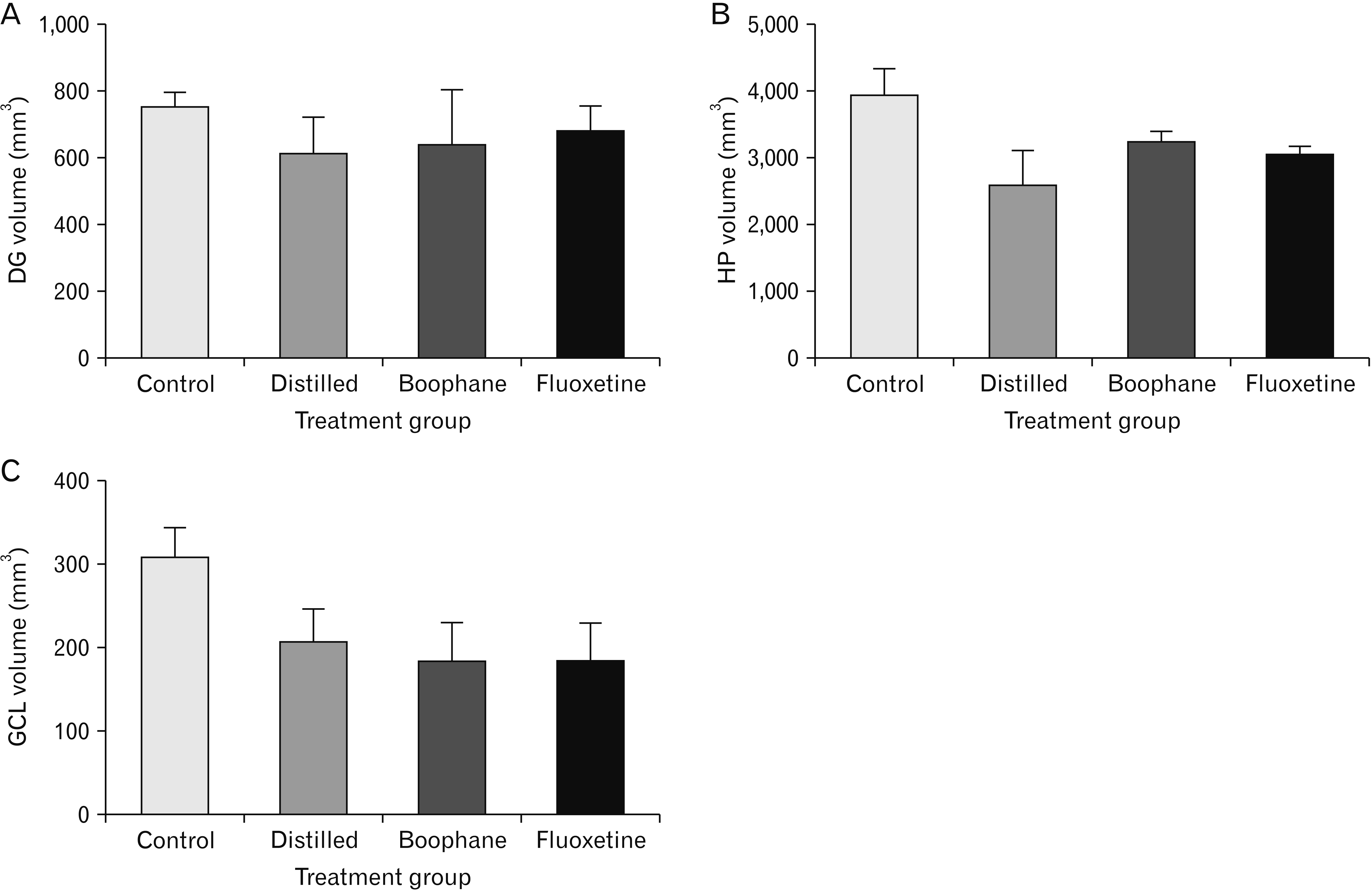
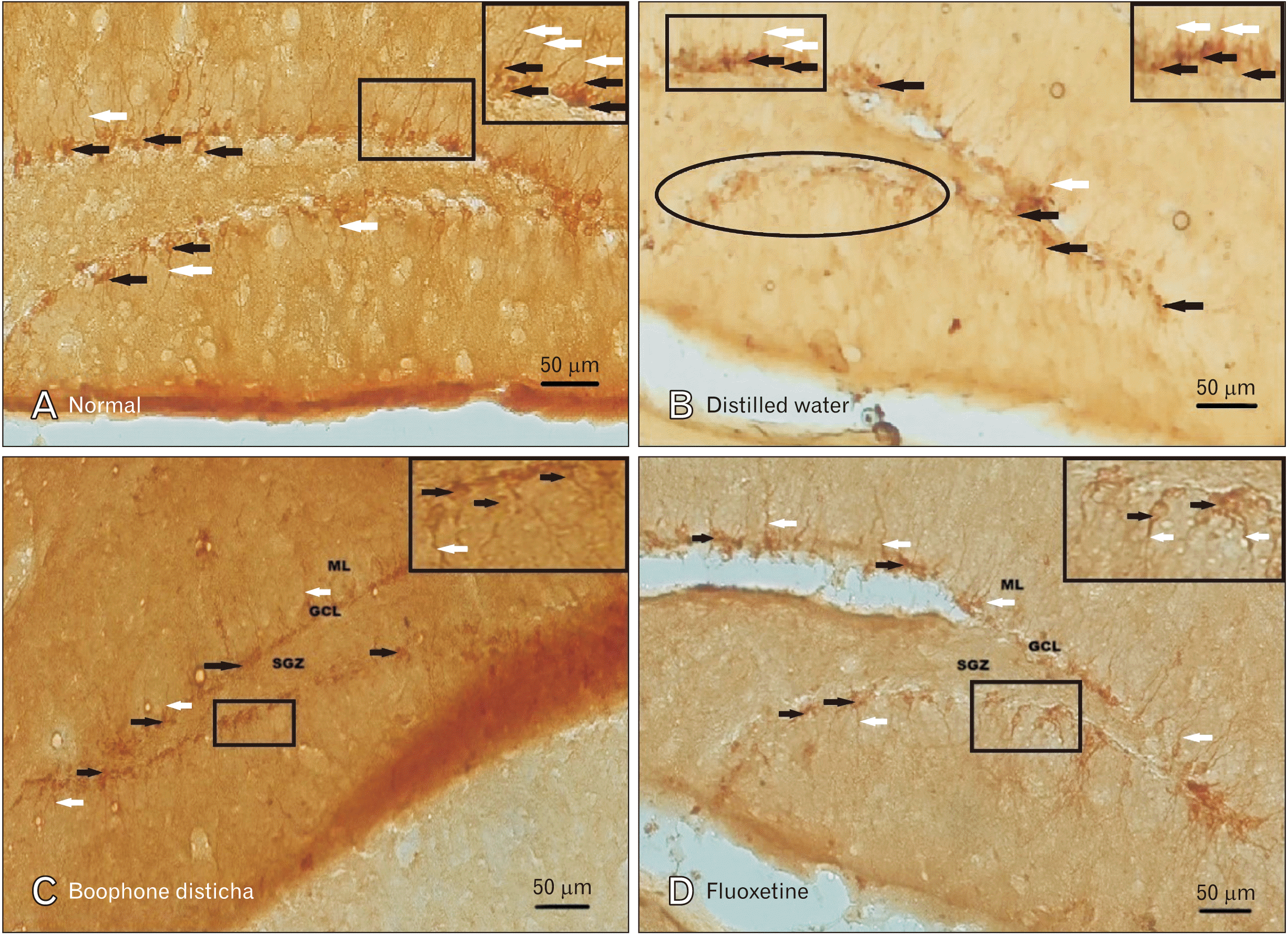
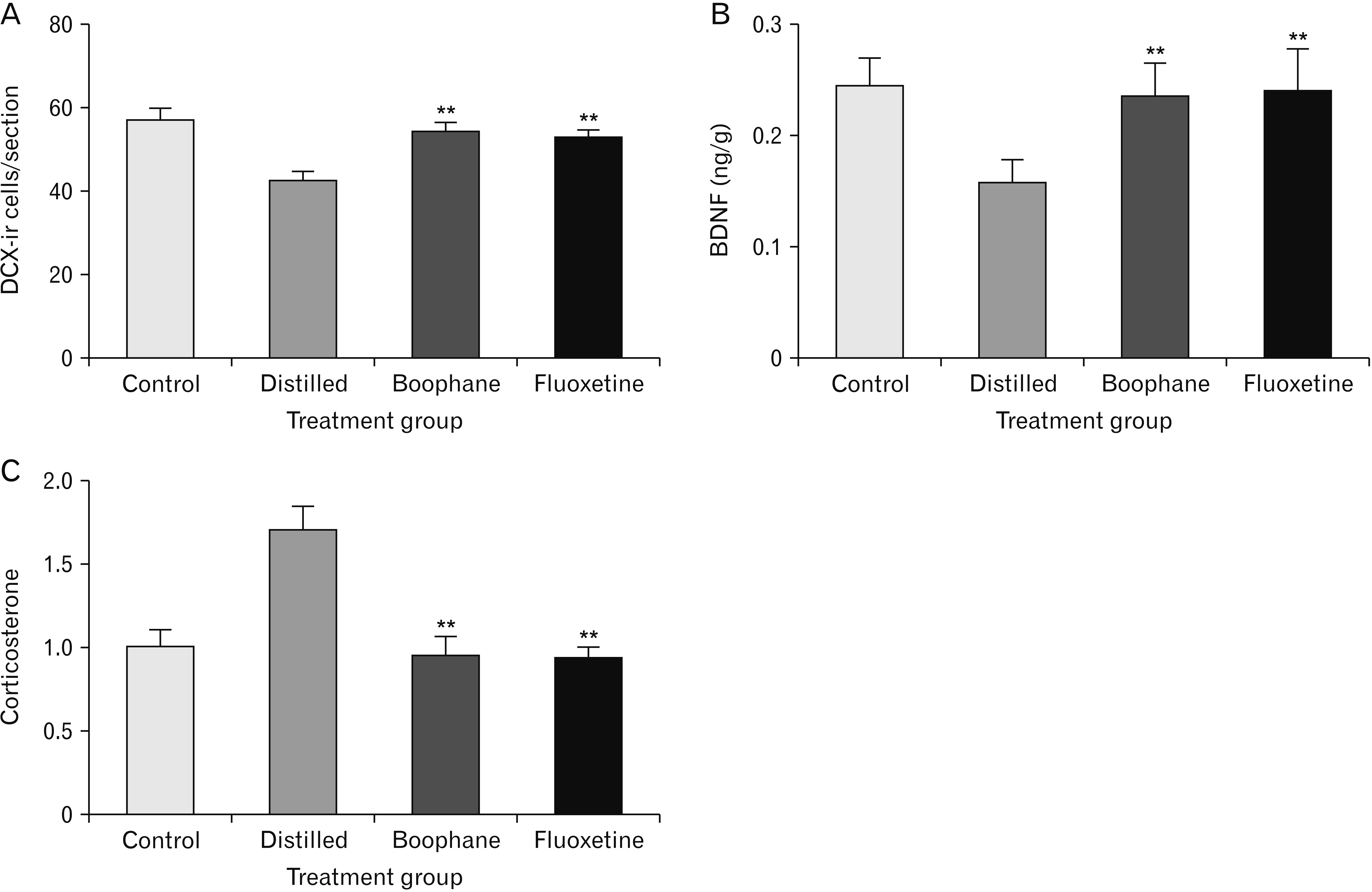




 PDF
PDF Citation
Citation Print
Print



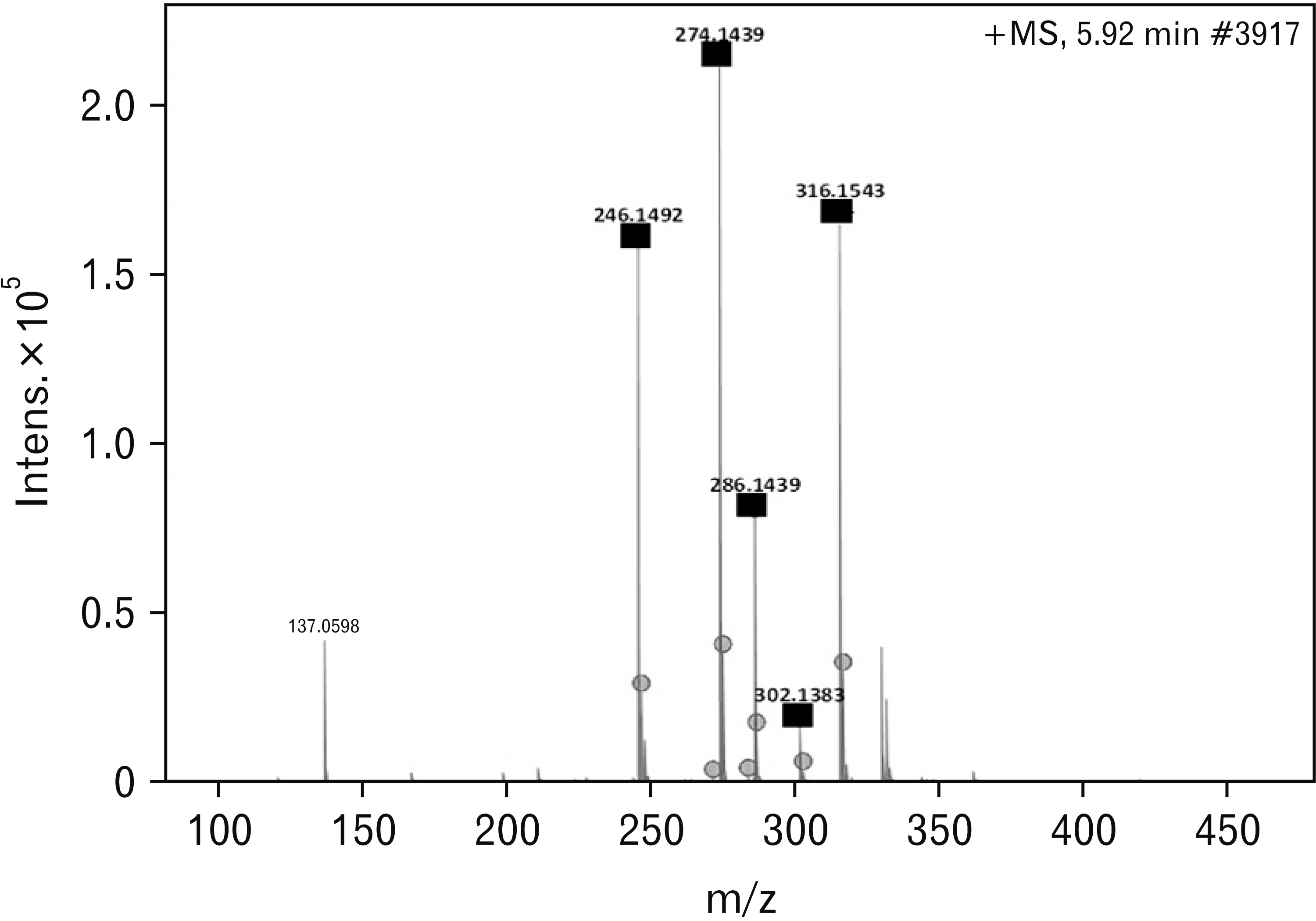
 XML Download
XML Download